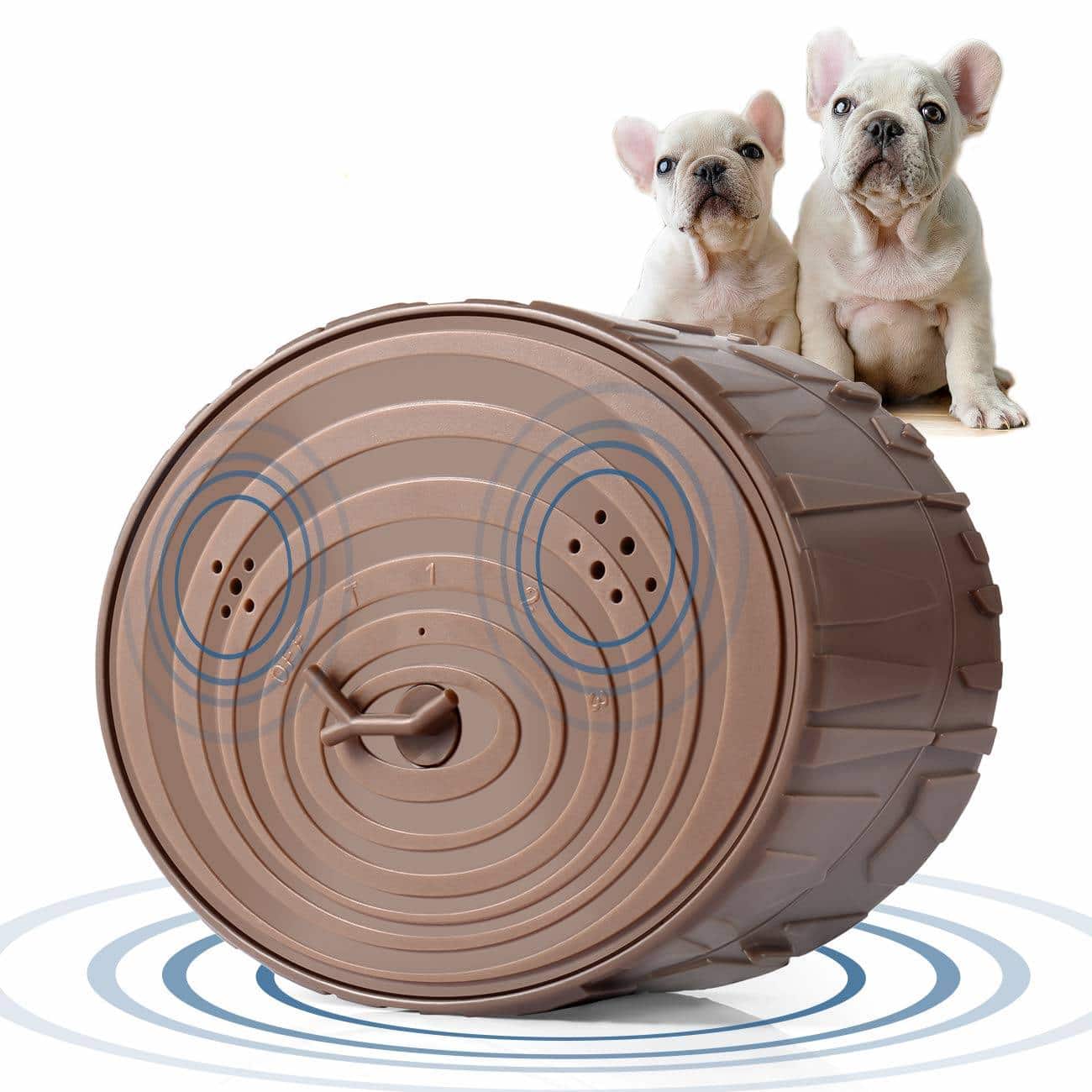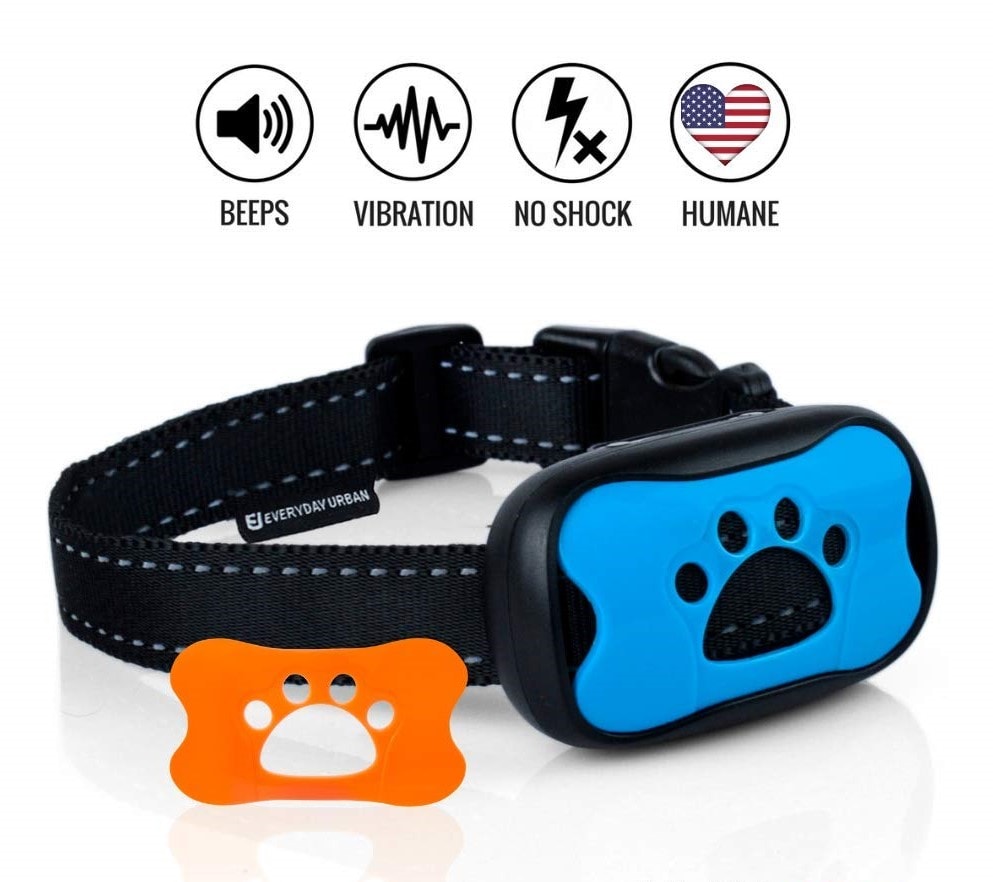How To Stop Your Dog From Barking
by dogtoyadvisor | Last updated on November 18, 2020
We only review products we tested ourselves. We have affiliate partnerships, so we get a share of the revenue from your purchase.

It’s late at night and your dog is barking incessantly for no apparent reason. The sound is traveling through your ears straight into your brain and turning it into mush.
You can’t take it anymore! You yell, beg, cry and nothing works, the barking only seems to be getting worse.
Luckily we know a few tips on how to stop noisy dogs from turning your life into a nightmare.
Find out here how to stop excessive barking in three easy steps.
Teaching a Dog to Stop Barking
Yes, it’s that simple!
Dogs learn differently than humans and if you understand how their mind works, you can solve MOST dog behavior issues, including barking!
First, Teach Your Dog to Bark!
To stop the unwanted barking, you’ll need to teach your dog a “cue” that tells him it’s time to be quiet.
Granted, it probably won’t work every time you use it, if your dog gets too excited he won’t even notice you’re talking, but it’s a first step that will help on most occasions.
In order to do this, you’ll first need to do the opposite and teach how to bark on command.
That will give you an expected behavior reference that will make it so much easier to teach the opposite.
Let’s begin!
Step 1 – Mark the Bark
Use the clicker to acknowledge the intended behavior, as soon as your dog barks you click or use the chosen cue word, followed by a reward.
Make sure you do this while the dog is still barking to make sure he gets what it is your marking.
If you’re trying to get your dog to bark but he isn’t cooperating, bring out whatever usually makes him bark and use it for this step.
Repeat this sequence several times.
Step 2 – Barking on Command
Pick a word to use when you want your dog to bark.
Use the object that makes your dog bark and use the chosen cue word to make him bark. Once he does, mark and reward, as in the previous step.
Repeat this sequence until you’re certain he’s barking on cue and that he understands that only when he barks on cue will he be rewarded.
Step 3 – Stop Barking
For this, you’ll need to trigger your dog into barking without the cue word.
Once he stops barking, you’ll begin using the cue word for “quiet” and reward him immediately. Try using the cue word as closely as possible to when the dog stops barking so he’ll see the connection.
Repeat this sequence until your dog looks for the treat once you use the cue word, this means he has associated the word with the reward.
Finally, use the bark cue word to make your dog bark for a while and then the quiet cue word. Reward your dog as soon as he complies.
As soon as he figures this out and responds to each cue word correctly, you can practice his new found skills for as long as you’d like.
This simple exercise will make your dog aware of his own behavior.
Simple Hack to Stop Barking
One of the most creative and effective solutions we’ve found during our search will blow you away: an anti-barking device!
The device has a microphone to sense barking and then send out an ultrasonic sound that surprises dogs into stopping.
It has a pretty good range and you can set the sensitivity and the strength of the signal, depending on the dog size or the distance of the device.
If You Want REAL Progress, Train Your Dog!
Even the most effective anti-barking tool in the World isn’t mean to be used forever or all the time.
The best way to do it is committing to training your dog and be consistent with it.
Trust us, we know what it’s like to want to train your dog and have no idea how to do it.
Trainers charge a lot of money to tell you what to do, but don’t do the work for you. This means that you’ll spend $50/hour, having the results depend solely on you.
We wanted to be able to learn how to train our dogs to do what we wanted (and what we didn’t want them to do) without breaking the bank.
But we still needed help!
If your dog is still barking …
We suggest trying bark control collars.
Yes, we know bark collars have a bad rep. And we were a bit on the fence until we actually got some.
We tried citronella spray and vibration collars. We’ve tested it ourselves with different intensities before placing it on our two tasmanian devill-like dogs.
As for the citronella, we weren’t really comfortable with the dogs smelling like something they disliked for long periods of time, given their sensitive noses, so we didn’t keep them on all the time. Also, we underestimated Tommy and Coco’s stubbornness; eventually, they got used to it and that was that.
So, for us, the vibration collar worked much better. It annoys them more than is bothers them. It reacts to the vibration of their vocal chords meaning it won’t confuse your dog’s bark with another dogs’.
Also, you can control the intensity of the vibration, which is important for us, because Tommy and Coco are small dogs.
Our favorite part is it worked quickly with long-lasting effects. After a short period, they began associating barking with the vibration so they would stop themselves even without the collar.
There is no problem in using this collar permanently but, odds are, you won’t have to.
Don’t knock it ’till you’ve tried it, this collar has done wonders for us and our ears.
Affiliate links / Images from Amazon Product Advertising and iStock
Recommending Reading:











0 Comments